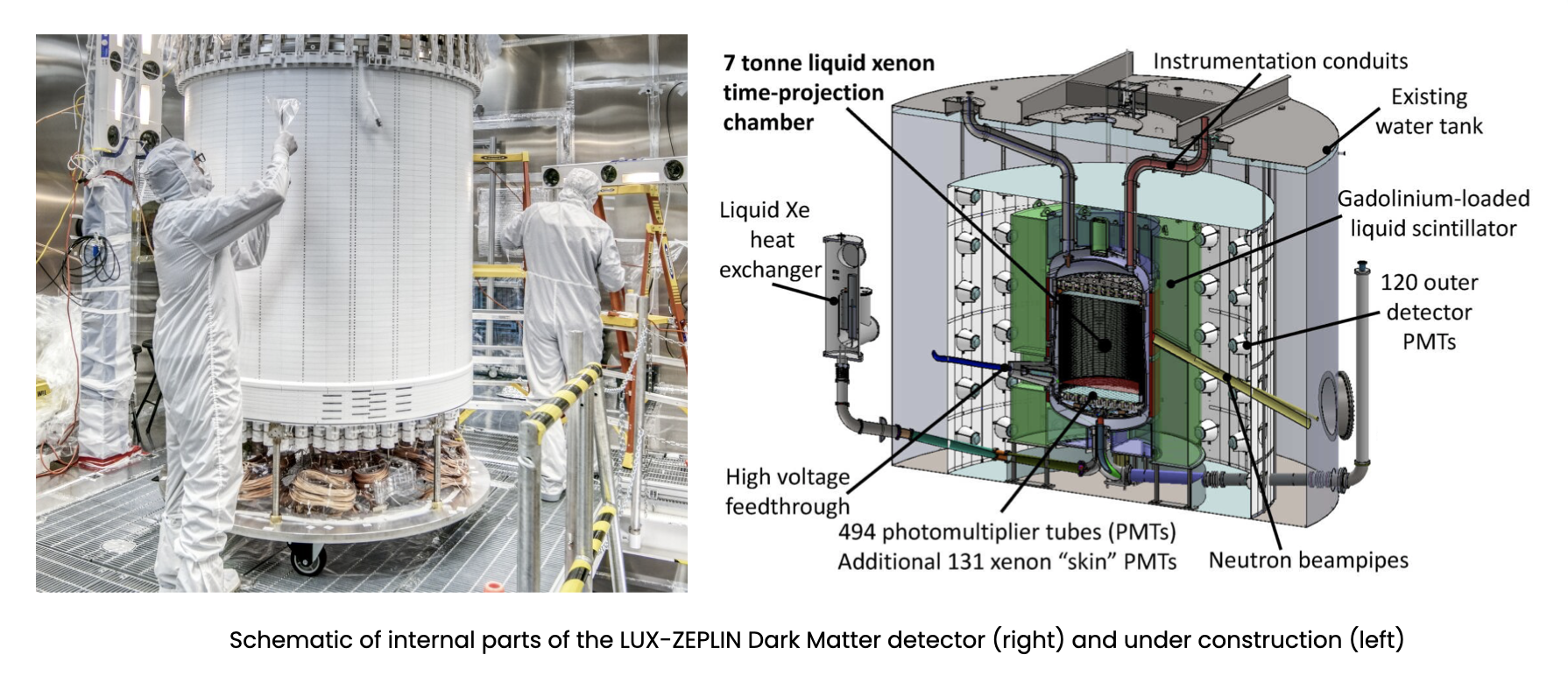PPD has been involved in and played a central role in dark matter searches in the UK since its inception almost two decades ago. One of the co-founders of the UK dark matter searches was Peter Smith from PPD who pioneered liquid xenon technology and initiated the ZEPLIN programme at Boulby Underground Laboratory.
The ZEPLIN-I experiment was one of the first dark matter experiments in the world using a xenon singe-phase detector. The follow-on, ZEPLIN-II was the first world's dark matter experiment using xenon double-phase technology, while ZEPLIN-III led by Imperial College concluded the programme. It operated at a high electric field achieving the best discrimination of any xenon detector. Its second science run, lasting almost a year, was the world's longest continuously run of any dark matter experiment with a double-phase xenon detector, proving the maturity of the technology to be used in future investigations and achieving competitive limits in WIMP searches. The PPD DOM group participated in the ZEPLIN-III experiment exploitation and its decommissioning. Primary responsibilities were: project management, liaison between the Boulby Underground Laboratory and the experiment, detector calibration, radiation protection supervision, management of the data centrally stored at RAL and relevant equipment repatriation to RAL.
LUX-ZEPLIN
After many years of working on liquid xenon for dark matter searches and helping two-phase xenon to become a world-leading technology, the PPD DOM group is now part of the LUX-ZEPLIN (LZ) collaboration.

The LUX-ZEPLIN double-phase detector uses ten tonnes of cryogenic liquid xenon to search for dark matter with unprecedented sensitivity and is located a mile underground at the Sanford Underground Research Facility (SURF) in South Dakota.
The LZ collaboration has published its results from the 1st 280 days of data collection. It plans on producing data for a total of 1000 days. As of writing, the LZ collaboration boasts world leading sensitivity for WIMP searches, probing into areas no prior experiment has before. Following from their world leading results in 2022, LZ released results in August 2024 imposing upper WIMP mass boundaries of 9 GeV/c2 .
Whilst this experiment's primary objective is to investigate the nature of dark matter, it is also able to investigate beyond the standard model phenomena such as neutrinoless double beta decay, rare xenon decays and sun derived boron-8 neutrinos.
PPD Contribution
PPD, one of the founding members of LZ, has participated in the LUX-ZEPLIN project throughout the R&D (2012-2015), construction, commissioning and exploitation (2022 onwards) phases. In collaboration with LBNL, RAL the designed the cryostat. RAL then manufacture and collaborated on the material searches for the cryostat as well as project-managed a broader UK effort from several leading universities. Taking place at RAL and Boulby underground laboratory, material searches for the cryostat underwent a rigourous 2 year screening campaign eventually yielding in the selection of commercially ultra radiopure titanium. This colossal double walled 10 tonne vessel (depicted below) was one of the main UK deliverables to the LZ collaboration.

Picture of the LZ cryostat upon delivery to SURF. RAL collaborated with universities and LBNL to design, manufacture and deliver the cryostat along with several supporting components. Image credit: Matt Kapust, Sanford Underground Research Facility.
It is also responsible for the development of the software, hardware and firmware of the calibration source deployment system (CSD). In the commissioning and exploitation phases, PPD played an important role in assisting the detector calibration activities using the CSD system allowing to deployment of calibration sources, both neutron sources and gamma sources, along a dedicated 6-m long calibration tube. This involves lowering via fine intricate filaments, with a high pulsed laser to track their depth. The design and manufacture of the lowering filaments, reflective material and other specialised components occurred at RAL.

Entirety of the CSD system. The chamber containing the deployment mechanics.
The dark matter team at RAL is still actively involved within CSD operation, being able to remotely adjust the source positioning. This allows for 24 hour data collection and calibration between science runs, having been intensively used in the intervals between runs, it is instrumental in ensuring the detectors consistent operation throughout LZ's lifetime.
